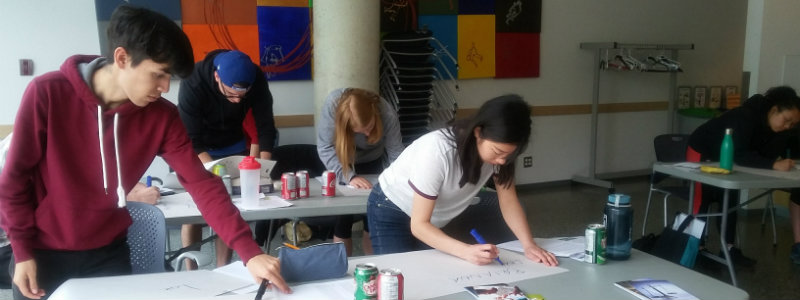How can you easily enhance team dynamics when you’re a team lead?
In this post, I share three simple CliftonStrengths (also called StrengthsFinder) activities that contribute to team building and team productivity.
I have used these with young adults, as well as with seasoned professionals–and participants enjoy getting to know themselves and each other through these activities.
Activity 1: Love & Frustrated by These CliftonStrengths Themes
How it works: Individuals go around the room and have short conversations in pairs in which they ask each other to identify one CliftonStrengths Signature Theme (also called Top 5 Themes) of theirs that they love and one strength (of theirs) that frustrates others. For example, as a participant in this activity, I might answer that the StrengthsFinder Theme I love is Learner because it keeps me curious and energized about most things. A Top 5 Theme of mine that can sometimes annoy others (and myself) is my Achiever because it means I am constantly working in an effort to get things done and sometimes expect others to operate in the same way.
What needs to happen before this activity: Participants need to have completed the CliftonStrengths assessment prior to this activity (and, therefore, they will have their Signature Themes). However, this activity could work if participants have generated a list of strengths in other ways.
Resources and time needed: This activity works best if you have created an activity sheet/chart ahead of time that participants can fill in as they walk around the room. The columns can be: Name of person I chatted with, What StrengthsFinder theme does this person love? What StrengthsFinder theme does this person have that frustrates them and others?. 10 minutes works well for this activity and you can give more time if you want more people to connect with one another and/or have a large group.
Benefit to teams: This activity will enhance team dynamics because it helps individuals get to know how their colleagues feel about their own strengths and what characteristics their colleagues perceive as being problematic about themselves! (Remember that teammates are only commenting on their own strengths).
Credit: This activity is from the Gallup organization.
Activity 2: Achievement Story to Enhance Team Dynamics
How it works: In this activity, participants share a story about an achievement and then reflect on the strengths they drew upon to make happen this accomplishment.
Instructions for the person leading the activity:
a) On your own, take a moment to quietly think about a time when you accomplished something you are proud of (it needn’t be anything momentous, it could be something “small” or big). Consider which strengths you drew upon for this achievement.
b) In pairs or trios, each person takes a maximum of 3 minutes to tell that story. After each story, the listener shares what StrengthsFinder themes they heard the storyteller use/apply/describe in the achievement story. The storyteller can add to these if anything was missed.
Resources and time needed: No resources needed. Time needed: 10-15 minutes.
Benefits to teams: Members learn more about each other through sharing an accomplishment story and they get some further insight into the strengths their colleagues value.
Activity 3: Strengths Manifesto
How it works: Individual participants respond to four prompts and share these with their teammates to anticipate some ways they may work together more productively.
The 4 prompts are:
1. You get the best of me when….
2. You get the worse of me when…
3. You can count on me to…
4. What I need from you is…
Resources and time needed: We created a handout for participants to fill out (see below). Time needed: 10 or more minutes, depending on the size of the team.

Strengths Manifesto
Benefits to teams: The manifesto activity works best if it kept alive among the team members over time. Within a team, the content from the manifesto could be brought into team meetings or discussions or project planning meetings. In a small team, members might take pictures of each other’s manifesto for easy reference.
Credit: This activity is from the Gallup organization.
Why Take a Strengths-Based Approach to Development?
The activities described above use a strengths-based approach. Simply put, strengths-based approaches value the capacity, skills, knowledge, and potential in individuals and communities, including work teams. This is the philosophy that underpins CliftonStrengths. A strengths-based approach does not ignore problems or challenges but presumes that strengths will help address these.
Given how difficult it can be for individuals to identify (and appreciate) their own strengths, I get excited about the potential for any process, tool, message, or other to help people learn more about themselves and, especially, what is GOOD about them. So many other voices–‘real’, media, and imagined–tell them/us otherwise.
Your Turn
Have you used a particular activity that enhances the dynamics and/or productivity of teams that work together on an ongoing basis? Let me know your favourites.
Are you interested in growing your leadership and developing your strengths? Work with me! As a Gallup-Certified Strengths Coach and professional ICF coach, I help people find more joy at work and in their careers.
Considering what’s next in your career?
Many people enjoy learning about their strengths and reach a point where they want help using that insight to think more clearly about their career direction.
I offer a focused 20-minute conversation for people who are considering working with me as a coach and want to explore whether it would be a good fit.


